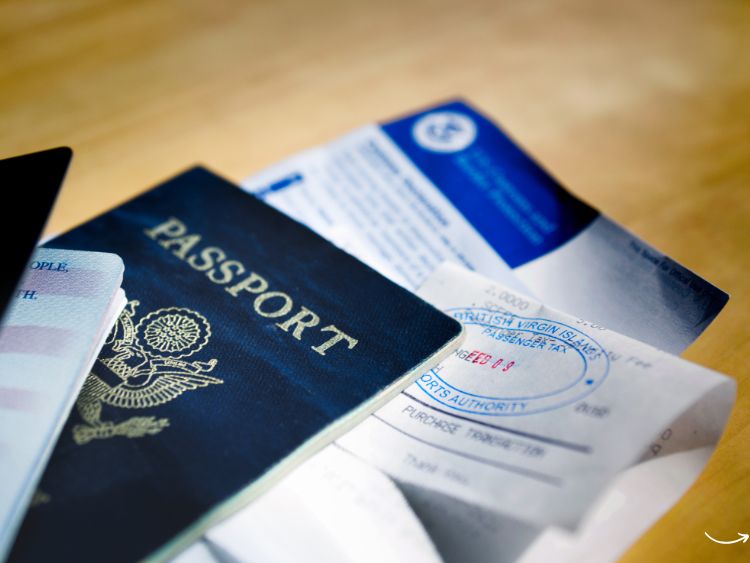Are you planning to visit the United States soon? Well, buckle up because there’s a crucial step you can’t afford to skip: visa stamping in the USA. This process can be a bit daunting, especially if you’re not familiar with the ins and outs. But don’t worry; we’ve got your back. In this comprehensive guide, we’ll walk you through everything you need to know about visa stamping, from the application process to what to expect at the consulate. Let’s dive right in!
What is Visa Stamping?
Visa stamping is the process by which a visa is endorsed in your passport by a consulate or embassy official. This stamp signifies that your visa application has been reviewed and approved, allowing you to enter the United States for a specified purpose, such as tourism, business, or study. But here’s the kicker: having a visa stamp doesn’t guarantee entry into the USA; it merely indicates that you’re eligible to travel to a port of entry, where an immigration officer will make the final call.
Types of Visas That Require Stamping
Before we delve into the nitty-gritty of the visa stamping process, let’s talk about the types of visas that require stamping:
- Tourist Visa (B-2): For individuals visiting the USA for leisure or medical treatment.
- Business Visa (B-1): For those traveling for business-related activities.
- Student Visa (F-1, M-1): For international students attending academic or vocational schools.
- Work Visa (H-1B, L-1, etc.): For professionals employed in the USA.
- Exchange Visitor Visa (J-1): For participants in exchange programs.
- Fiancé Visa (K-1): For individuals intending to marry a U.S. citizen.
Each visa category has specific requirements and processes, but the stamping procedure remains largely consistent.
The Visa Stamping Process
1. Application Submission
First things first, you need to submit your visa application. Here’s a quick rundown of what this entails:
- Complete the DS-160 Form: This online form is mandatory for all non-immigrant visa applications. Ensure that you fill it out accurately, as any discrepancies can lead to delays or denials.
- Pay the Visa Fee: The fee varies depending on the visa type. Keep the receipt handy, as you’ll need it later.
- Schedule an Appointment: You’ll need to book two appointments—one at a Visa Application Center (VAC) for biometrics and another at the consulate for the interview.
2. Attend the Biometrics Appointment
At the VAC, you’ll have your fingerprints and photograph taken. This step is crucial as it adds an extra layer of security to the process.
3. Prepare for the Interview
The consular interview is arguably the most critical part of the visa stamping process. Here are some tips to help you prepare:
- Gather Required Documents: Make sure you have all necessary documents, including your passport, DS-160 confirmation page, visa fee receipt, appointment confirmation, and supporting documents (e.g., invitation letters, financial statements, etc.).
- Dress Appropriately: First impressions matter, so dress neatly and professionally.
- Practice Common Questions: Be prepared to answer questions about your trip, such as your purpose of visit, duration of stay, ties to your home country, and financial status.
4. Attend the Interview
During the interview, the consular officer will ask you a series of questions to determine your eligibility for the visa. Answer honestly and confidently. If approved, your passport will be kept for stamping, and you’ll be notified when it’s ready for pickup.
Common Challenges and How to Overcome Them
1. Incomplete Documentation
One of the most common reasons for visa delays is incomplete documentation. Double-check your paperwork before heading to the consulate to ensure you have everything in order.
2. Inconsistent Information
Make sure the information provided in your DS-160 form matches the details in your supporting documents. Inconsistencies can raise red flags and lead to further scrutiny.
3. Nervousness During the Interview
It’s natural to feel nervous, but try to stay calm and composed during the interview. Practice with a friend or family member to build confidence.
FAQs
What is the processing time for visa stamping in the USA?
The processing time can vary depending on the visa type and the consulate’s workload. Generally, it takes a few days to a few weeks.
Can I expedite the visa stamping process?
In some cases, expedited processing is available for an additional fee. Check with the consulate for eligibility and procedures.
What should I do if my visa application is denied?
If your visa application is denied, you will receive a letter explaining the reason. You can reapply if you address the issues mentioned in the denial letter.
Is visa stamping required for renewal or extension?
If you’re already in the USA and need to extend or renew your visa, the process differs slightly. You may not need to leave the country, but it’s essential to follow the USCIS guidelines for extensions.
Conclusion
Navigating the visa stamping process can be a bit of a rollercoaster, but with the right preparation, you can sail through it smoothly. Remember, the key is to stay organized, provide accurate information, and remain calm during the interview. Whether you’re visiting for a short trip or planning a long-term stay, getting your visa stamp is an important step toward your journey to the USA. Good luck!
Authoritative Links
- U.S. Department of State: https://travel.state.gov
- USCIS Official Website: https://www.uscis.gov
- Visa Appointment Scheduling: https://ais.usvisa-info.com
- DS-160 Form Instructions: https://ceac.state.gov/genniv
- U.S. Embassies and Consulates: https://www.usembassy.gov
There you have it—a comprehensive guide to visa stamping in the USA. Safe travels, and may your journey be filled with exciting adventures and memorable experiences!

